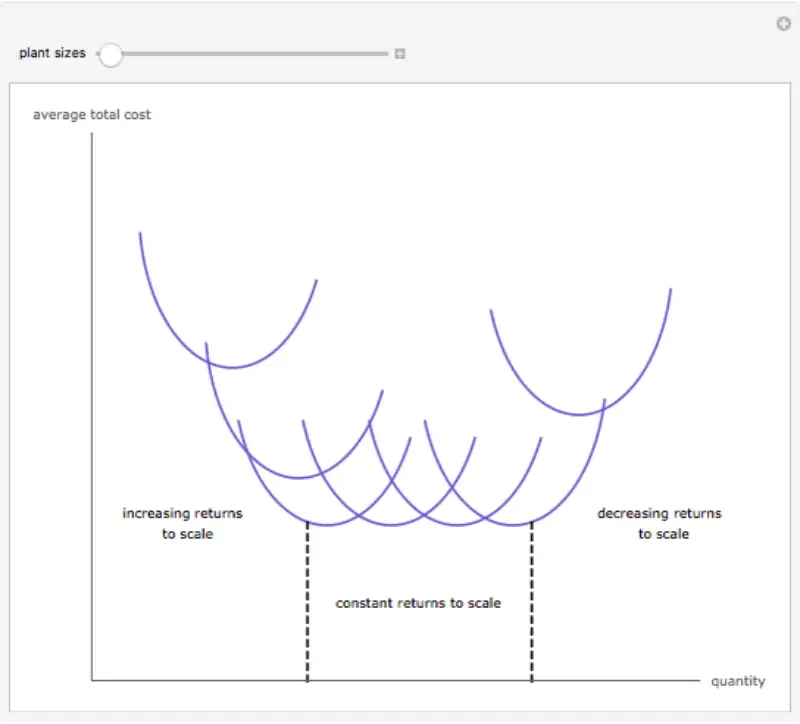The relationship between short-term average total cost (SATC) and long-term average total cost (LATC) is a fundamental concept in microeconomics, specifically in the theory of the firm. Let’s clarify the terms and explore their relationship:
### Short-Term Average Total Cost (SATC)
– **Short-term**: The period during which at least one factor of production (e.g., capital, machinery) is fixed.
– **Average Total Cost (ATC)**: The total cost (fixed + variable) divided by the quantity of output produced.
In the short term, firms cannot adjust all inputs. Typically, labor is considered a variable input, while capital is fixed. The SATC curve usually has a U-shape due to the law of diminishing returns, which states that adding more of a variable input to a fixed input will eventually yield lower additional output.
### Long-Term Average Total Cost (LATC)
– **Long-term**: The period during which all factors of production are variable, and firms can adjust all inputs.
– **Average Total Cost (ATC)**: Similar to short-term ATC, but calculated with the flexibility to adjust all inputs.
The LATC curve also typically has a U-shape but is flatter than the SATC curve. It reflects economies and diseconomies of scale:
– **Economies of scale**: When increasing production lowers the average total cost.
– **Diseconomies of scale**: When increasing production raises the average total cost.
### Relationship Between SATC and LATC
1. **Envelope Curve**: The LATC curve is often referred to as the envelope curve because it is derived from the SATC curves. Each point on the LATC represents the lowest possible cost at which a firm can produce a given level of output when it can adjust all inputs optimally.
2. **Short-Run and Long-Run Planning**: In the short run, a firm is constrained by its current capital and other fixed inputs, leading to a specific SATC. However, in the long run, the firm can adjust all inputs to minimize costs, reflected in the LATC curve. Thus, the LATC curve is typically lower than or equal to the SATC curves at each level of output.
3. **Tangency Points**: The SATC curves are tangent to the LATC curve at some point. These tangency points represent the output levels where the firm is operating at an optimal scale for the given short-term constraints. At these points, the cost structures align, and short-term cost equals long-term cost.
In summary, the LATC curve is derived from the SATC curves and represents the lowest possible average total cost for any output level when a firm can adjust all inputs. The SATC curves, on the other hand, reflect the cost structure in the short run with some fixed inputs.
https://demonstrations.wolfram.com/LongRunAverageTotalCost/
“Long-Run Average Total Cost”
http://demonstrations.wolfram.com/LongRunAverageTotalCost/
Wolfram Demonstrations Project

